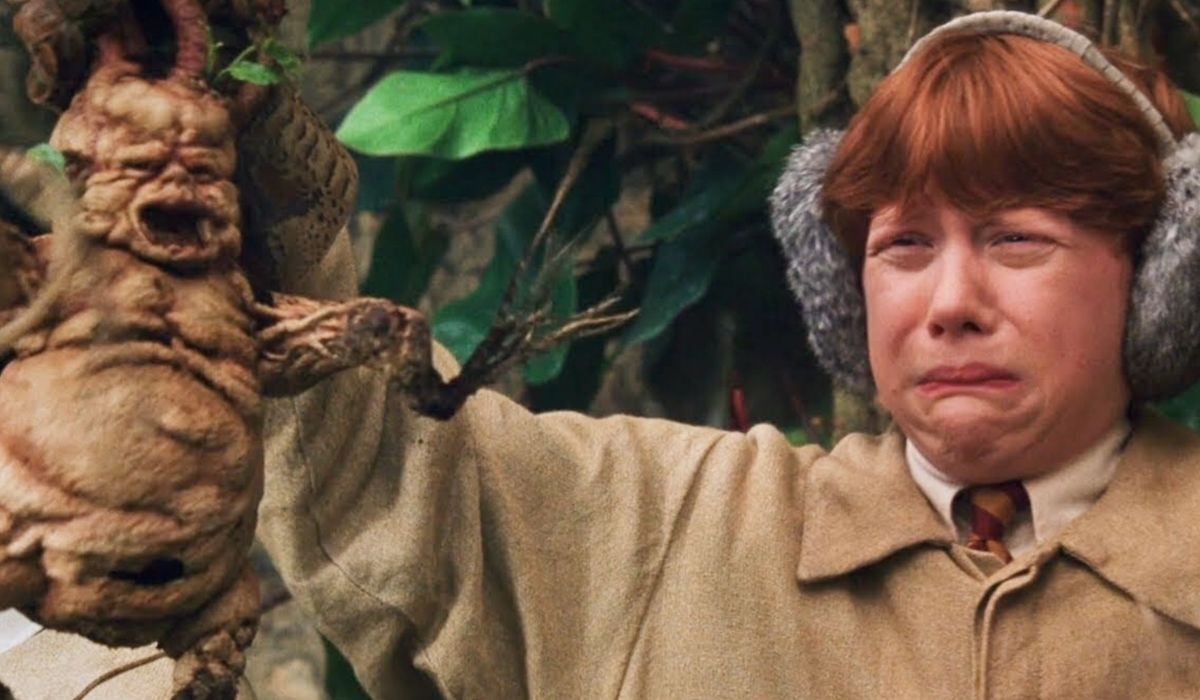
The upcoming Harry Potter television series is shrouded in anticipation, given its status as one of the most cherished and visually recognizable fictional universes in popular culture. Each new development sparks excitement, including those that stir debate. Continued comparisons with the films are prevalent, yet there’s a key aspect from the initial adaptation that must be preserved for the series to succeed: abandoning practical effects is not an option. Nowadays, many believe that CGI can resolve all issues, but the reality remains that the craftsmanship carried out on set using real props, makeup, and mechanics remains unparalleled when it comes to creating a world that viewers can truly immerse themselves in.
Anyone who has watched the Harry Potter movies can attest to their exceptional ability to strike a perfect balance between practical and digital effects, a feat many modern productions seem to overlook. For instance, the Whomping Willow wasn’t merely a computer-generated image; it was a real-life construction with moving branches that synchronized perfectly with the actors. This adds a layer of authenticity, as it gives the impression of its solidity, texture, and presence. Most digital effects struggle to achieve this level of immersion. The Mandrake in Harry Potter and the Chamber of Secrets is another impressive example – it was an animatronic prop that moved and made sounds, lending a sense of genuine reality to the scene that’s challenging to capture with CGI.

Speaking of the memorable scene in “Harry Potter and the Prisoner of Azkaban” when Marge Dursley (played by Pam Ferris) inflates, many viewers presume it was all digitally created. However, it turned out to be a blend of extraordinary makeup effects and practical techniques, with the actress donning a unique suit. Details like these not only make a lasting impact, as they suggest that the actress is truly undergoing the transformation, something you can’t replicate artificially. While such choices might appear insignificant, they’re what distinguishes an emotionally resonant production from one that merely appears technically proficient.
If you’re yet to be convinced of the merit of practical effects, consider the example of another well-known series that experienced a learning curve. The Star Wars prequel trilogy overused computer-generated imagery (CGI), leading viewers to complain about its artificial feel. However, in more recent phases, particularly in films like The Force Awakens and shows such as The Mandalorian, Lucasfilm opted for practical effects by using real props, costumes, and sets instead. The shift was met with a much more favorable response, creating the impression that the universe had regained authenticity. This isn’t about sentimentality – it’s about superior craftsmanship. It’s clear to viewers that there’s a difference.

Essentially, the new Harry Potter series should be mindful about relying heavily on CGI. While it’s true that digital effects can enhance certain aspects, over-reliance could dilute the emotional depth the films originally possessed. Excessive use of CGI often results in scenes appearing unrealistic, which can disrupt viewers’ immersion into the story, particularly for a world as captivating as Harry Potter’s where emotional connections are vital to its impact.

Read Next
The enchantment of the original films wasn’t solely due to their compelling stories or stunning visuals; rather, it was the authenticity that made the world seem tangible. The use of real sets, props, and practical effects lent an organic touch that no polished CGI can replicate. When everything is digitally created, even if it looks visually appealing, there’s still a sense of detachment – as if one isn’t witnessing something physically existent. The upcoming series must strike a balance – employ digital tools to augment reality, not supplant it. This might seem straightforward, but in the current effects-dominated film industry, it poses a significant challenge. At times, less can indeed be more.
Absolutely, certain scenes wouldn’t exist without Computer-Generated Imagery (CGI), such as intricate creatures or massive magical battles. However, the true enchantment lies in the blend – using digital effects to supplement areas where reality falls short, while maintaining a strong foundation in tangible elements that preserve an authentic feel. This balance is crucial to ensure that the series doesn’t just look appealing but feels genuine as well. To win over old fans and attract new ones, it’s essential they comprehend that practical effects aren’t just traditional methods – they’re a deliberate creative decision that significantly influences the audience’s emotional connection with the story. They’re what give the narrative its heartbeat. Relying excessively on digital spectacle instead could be a grave error – and a detriment to the soul of the franchise.

The films have demonstrated that the authentic magic of Harry Potter lies in the harmonious mix of creativity, skill, and reverence for the enchanting universe we’ve all grown fond of. To make a lasting impact, the series must grasp this essential lesson. While modern techniques aren’t obsolete, they’re what breathe life and emotion into any narrative. Harry Potter, in particular, may benefit most from these tangible effects since it’s so engaging because it feels like stepping into a wizarding world.
The Harry Potter TV series is currently in development.
Read More
- Masters Toronto 2025: Everything You Need to Know
- We Loved Both of These Classic Sci-Fi Films (But They’re Pretty Much the Same Movie)
- ‘The budget card to beat right now’ — Radeon RX 9060 XT reviews are in, and it looks like a win for AMD
- Forza Horizon 5 Update Available Now, Includes Several PS5-Specific Fixes
- Street Fighter 6 Game-Key Card on Switch 2 is Considered to be a Digital Copy by Capcom
- Gold Rate Forecast
- Valorant Champions 2025: Paris Set to Host Esports’ Premier Event Across Two Iconic Venues
- The Lowdown on Labubu: What to Know About the Viral Toy
- Karate Kid: Legends Hits Important Global Box Office Milestone, Showing Promise Despite 59% RT Score
- Mario Kart World Sold More Than 780,000 Physical Copies in Japan in First Three Days
2025-06-19 02:40